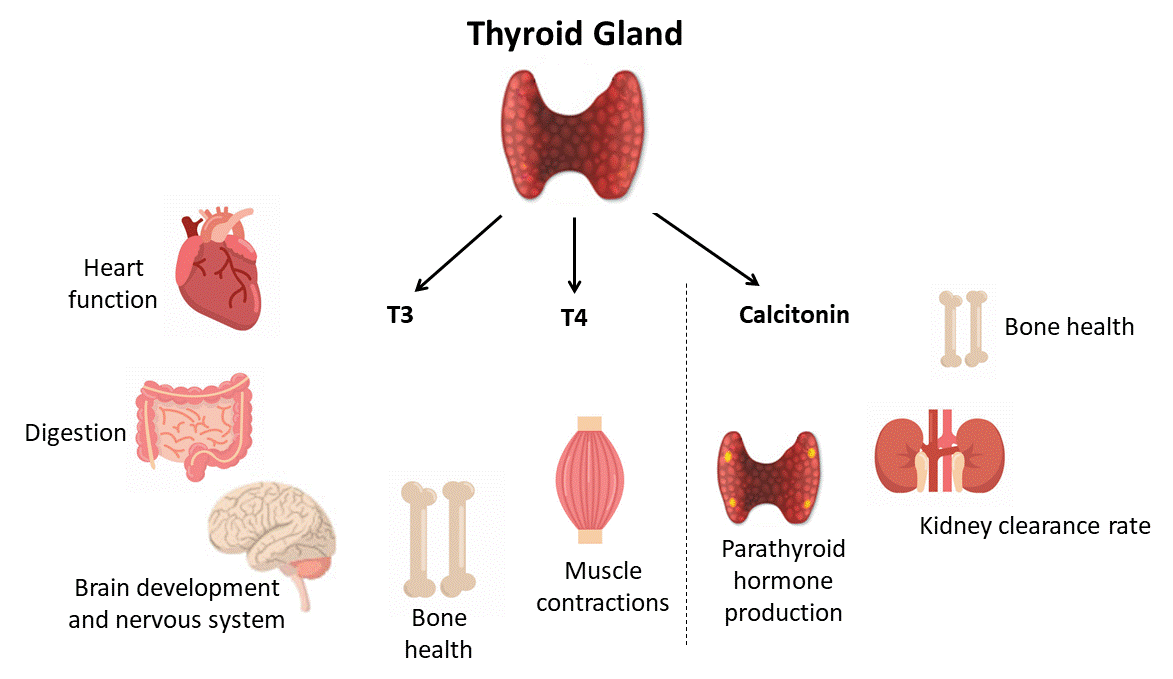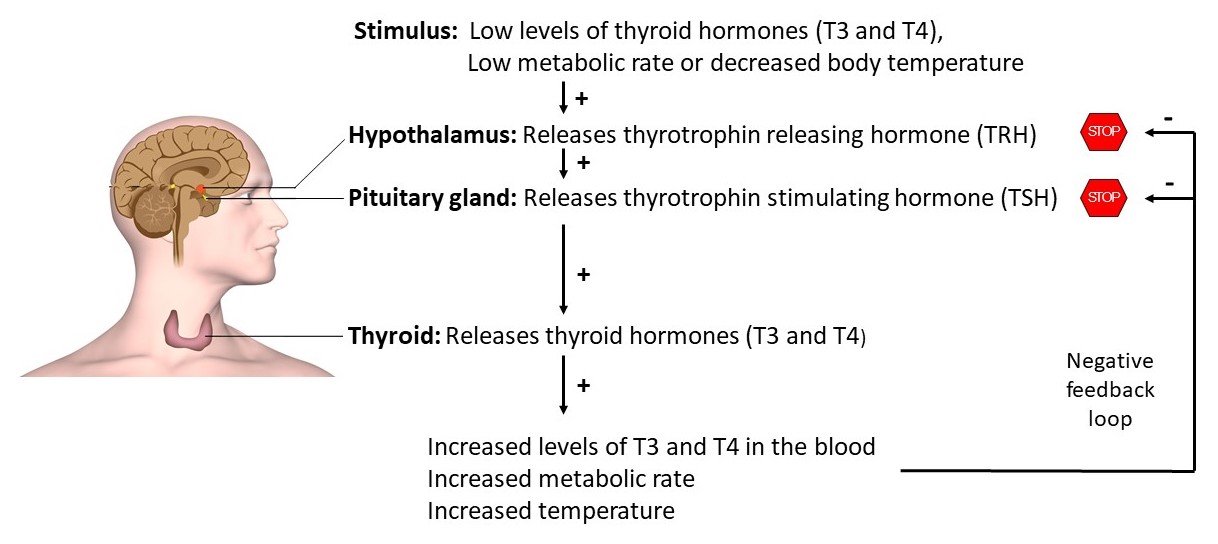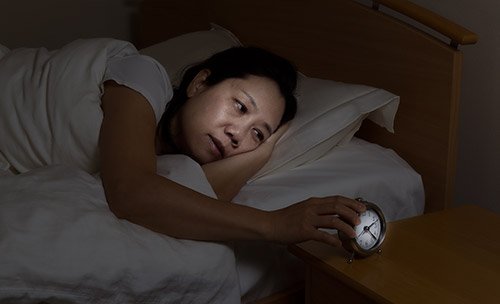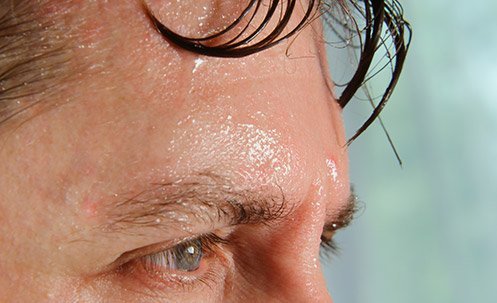Location of the thyroid gland
The thyroid is a small gland that sits in the front of the neck and wraps around the windpipe (or trachea). It is shaped like a butterfly or bow tie, with two lobes joined by a narrow bridge (called an isthmus).
Each lobe of the thyroid is 4-6 cm long and approximately 1.5 cm thick. It is generally larger in women than men, and increases in size during pregnancy.
Functions/Roles of the thyroid gland
The thyroid makes hormones that regulate all cells in the body. They help control:
Keeping the thyroid gland hormones in balance
Triiodothyronine (T3) and Thyroxine (T4)
Triiodothyronine (T3) and thyroxine (T4) are regulated by negative feedback loops. T3 and T4 are made and released in response to signals starting in the hypothalamus of the brain. The hypothalamus makes thyrotrophin releasing hormone (TRH) which signals the pituitary gland to make thyroid stimulating hormone (TSH). TSH then signals the thyroid to start making T3 and T4. When T3 and T4 levels in the blood reach a certain threshold, the hypothalamus makes less TRH and the pituitary gland makes less TSH. This system keeps the level of T3 and T4 within a narrow range.
Common Problems / Disorders of the Thyroid Gland
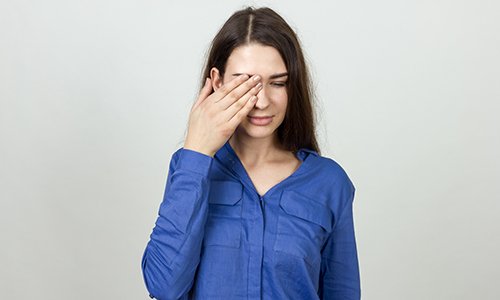
Grave’s Disease
Page last reviewed on 2 Mar 2023


